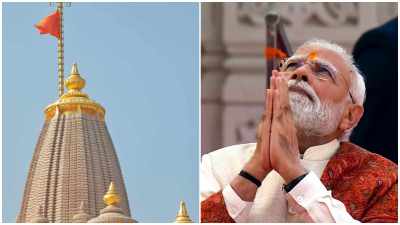Despite her many critically acclaimed performances that have stayed on in audiences’ memories, she won the Filmfare Award for Best Actress only twice in her career- the first time for her performance in Guide (1965) and then for Neel Kamal (1968). She also won the National Award for Best Actress for Reshma Aur Shera (1971).

While there have been plenty of discussions on Guide and its cultural impact, not enough has been said about Neel Kamal, a reincarnation drama starring Waheeda, Raaj Kumar and Manoj Kumar. Interestingly, it is Waheeda who gets top billing ahead of her two male stars in the opening credits of the film, a testament to her star power. Adding to this is the fact that the movie is titled after one of her characters— she played dual roles, starring as princess Neel Kamal and also Sita, a modern-day reincarnation of the royal.
So, how does the film, which was commercially successful, hold up nearly 55 years after its release? What place does it hold in Waheeda’s much-celebrated career?
The premise of Neel Kamal is a tried and tested Hindi film formula: there are two lovers forcibly separated due to class differences and how their tragedy affects people and events centuries later. Princess Neel Kamal is in love with Chitrasen (Raaj), the court artist who designs an entire Rang Mahal (‘Palace of Colours’) for her, only to be walled up alive by her father, the king, when he asks for her hand as a gift. The scene where he is being walled up serves as a throwback to the climax of K Asif’s Mughal-e-Azam (1960), an epic story about another pair of star-crossed lovers, Mughal prince Salim and courtesan Anarkali.
Centuries later, college girl Sita stumbles upon the ruins of Rang Mahal during a class trip, and awakens the spirit of Chitrasen who has been awaiting the arrival of his lover for years (Mohammed Rafi’s classic song ‘Aaja Tujhko Pukare Mera Pyar’ is a constant refrain in the Chitrasen portions). He starts haunting her to the point of causing her to sleep-walk— it is in this state that she ends up on railway tracks, in a state of semi-consciousness, and is saved from death by the arrival of Ram (Manoj), who she will eventually marry.
The naming of the characters as Ram and Sita is of course a reference to the Hindu epic Ramayana, and is meant to alert the audience to the fact that they are the ideal couple they are supposed to root for, not Chitrasen and Neel Kamal. And also, obviously, that Sita will have to go through a series of ‘trials by fire’ to prove her chastity and moral worth.
Story continues below this ad
Sita’s sleep-walking is treated less as a health concern and more as a sign of debilitating morality by her college principal. She is eventually expelled, because “who knows what she is upto at odd hours of the night, decked in her finest clothes!” Her father is advised by a well-meaning priest to get her married as a cure for the sleep-walking, which he agrees to— without informing her prospective in-laws about the problem at hand. The marriage ceremony sequence gave another Rafi classic: the song ‘Baabul Ki Duayein Leti Jaa’, which has now become synonymous with north Indian ‘bidaai’ ceremonies. The song also serves as a shorthand for the deep bond between father and daughter in the film.
This withholding of information creates more crises in Sita’s life. Her mother-in-law and sister-in-law are immensely suspicious of her sleep-walking and blame her for bringing disgrace to their family’s honour. In fact, this reputation is given more importance than Sita’s well-being, and the fact that she is barely conscious whenever she is found during a sleep-walking incident. The two fire all the servants in their mansion and make Sita do all the household work, as a punishment for her ‘sinful nature’.
Even her husband Ram, who is clearly besotted with her, does not completely trust her and after a point, banishes her from the household. This causes Sita to try and take her life; however she is saved at the right moment by the priest who had earlier advised marriage as a cure for her sleep-walking. After this, she finally comes face-to-face with Chitrasen, confronts her past, and is released from the burdens of her previous life by the end. A wild, melodramatic ride from start to finish.
To say this film reflects plenty of regressive ideals would be an understatement. Sita is willingly self-sacrificial, and even when faced with cruelty and neglect, chooses to uphold her ideals as an obedient Indian daughter-in-law. As for Neel Kamal, we never hear her say a single word (the climax has Sita speaking as Neel Kamal though), and we only know her as an enchanting beauty. She does laugh, but is that in any way enough for the titular character?
Story continues below this ad
The film and Waheeda’s roles in it are a far cry from Guide’s Rosie, a disgruntled dancer who leaves her inattentive husband at the first opportunity. She also does not think twice before leaving Raju, her lover, after he shows signs of being detrimental to her career and success.
It is also interesting to note that just the previous year, another film with a woman sleep-walking had released in Bollywood. Raat Aur Din (1967), directed by Satyen Bose, had Nargis play the role of a woman who takes on another identity at night, only to forget all about it during the day. Her performance won Nargis the inaugural National Award for Best Actress, and the film is today considered one of the first ones to tackle women’s mental health issues effectively.
The film does a great disservice to women’s causes (at one point, Sita’s well-intentioned father tells her in-laws that parents should just kill their daughters at birth if families like theirs exist, putting the onus of change away from society). However, it also does a great disservice to Waheeda herself: the scenes either have her crying over her fate, or showing a steely determination to be an ideal wife, or being coquettish with her lover. There’s not even a dance sequence worthy of her talent (the initial song with her dressed as Paul McCartney from The Beatles is super fun, though).
So, what to make of Neel Kamal? It can best be summed up as a mediocre film from the time Waheeda Rehman was at the peak of her career, a reiteration of toxic patriarchy that most of us want to bid goodbye to in Indian cinema (or already have, depending on who you’re talking to).




































